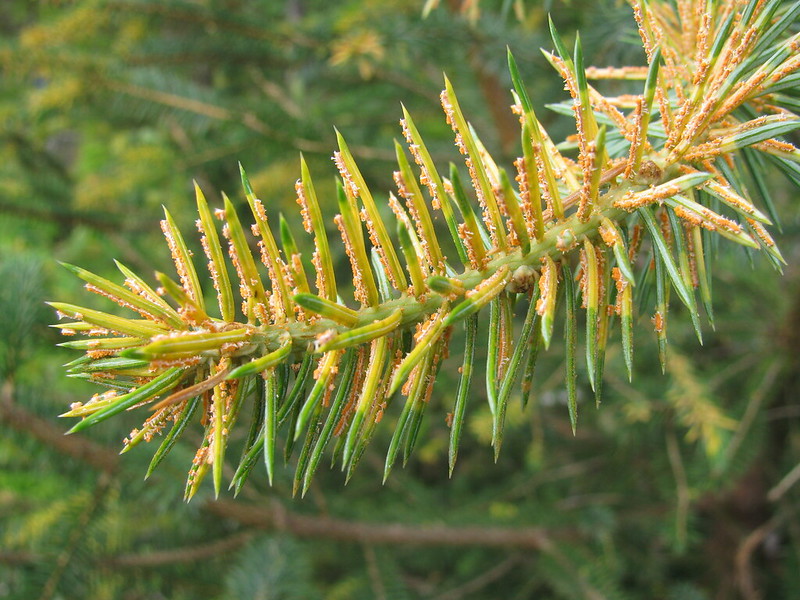Spruce Needle Rusts
Chrysomyxa ledicola Lagerh.
Chrysomyxa weirii H.S. Jacks.
Host(s) in Alaska:
Sitka spruce (Picea sitchensis)white spruce (P. glauca)black spruce (P. mariana)Labrador tea (Ledum groenlandicum); alternate host
Habitat(s): current-year spruce needles, Labrador tea leaves; (spruce is the only host of C. weirii)
Content prepared by Robin Mulvey, Forest Pathologist, Forest Health Protection, robin.mulvey@usda.gov.

Links to Resources & Publications
Hennon, P. E. 2001. Spruce Needle Rust. USDA Forest Service Leaflet R10-TP-99. USDA Forest Service Region 10. Available here.
Spruce needle rust (Chrysomyxa ledicola) has historically been observed throughout much of Alaska’s spruce forests (Detection Maps). This disease rarely results in tree mortality, but trees can have whole needle cohorts missing where disease has been severe. Moderate to high levels of disease have been noted annually since 2017. Chrysomyxa ledicola was far less prevalent compared to the widespread outbreaks of 2019 and 2020. Ground surveys in Interior found the fungus on both white and black spruce at nine locations from Denali National Park to just north of Fairbanks. From the air, about 6,600 acres were found from Denali National Park south to the Kenai Peninsula in Southcentral. Typical disease levels were found on Sitka spruce in Southeast Alaska, where it was reported at 13 locations, mainly near Juneau and on Mitkof Island. Of eleven research grade observations submitted through iNaturalist, there were six near Fairbanks, one each near Glacier View and Healy, and three in Southeast on Wrangell, Chichagof, and Baranof Islands. Chrysomyxa weirii is another, less common and less damaging, spruce needle rust in Alaska that is occasionally observed on one-year-old needles in spring. It has been documented in coastal forests from the Kenai Peninsula to Prince of Wales Island. Chrysomyxa weirii was recorded on Sitka spruce at two locations near Juneau in 2021. The affected trees showed uncommonly high levels of infection.

Heavily infected spruce trees have a distinctive orange tinge when the rust is fruiting on the needles in summer. However, sometimes trees are not obviously infected despite abundant orange spores on lake surfaces. Outbreaks are triggered by cool, wet weather in May, when fungal spores from Labrador tea (the alternate host) infect newly emerging spruce needles. Trees damaged by spruce needle rust are seldom killed, since damage is restricted to current-year needles, and the conditions for severe infection usually do not occur in the same location in consecutive years. Infected trees may be stressed or experience growth loss, but these impacts have not been quantified.
